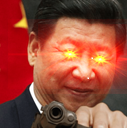Everyone should be familiar with Marx’s essential criticisms of capitalism.
In summary, while constant capital (machines, workhouses, and such) is a necessary factor for production, it produces no profit. Profit only comes from variable capital (labor). With automation, less labor and hence less value goes into each good. Increased productivity means that more use values, but those commodities are cheaper in real value*.
It’s not true that more useful goods means less labor is necessary. In the commodity economy where valorization in the highest aim, there can never be enough work. While socialized production would negate this horrible fact, capitalism always wants more labor to exploit.
Yet, the market compels continual automation to give individual capitalists an edge. This process leads to less and less value going into goods and more and more constant capital compared to variable capital. Even if the gross mass of profit grows (which is what the capitalist cares about), the relative profit from production perpetually decreases. And the problem of too much stuff calls for destruction: planned obsolescence, destruction of goods while people have needs unmet, and, of course, wars.
*with inflation, l monetary wealth increases quantitatively without real wealth increasing
“Pfft more like tendency of the rate of profit to BALL. Check mate Marxists, this AI boom has my portfolio SOARING.”
-Tech guy who forgot entirely the dot com bubble and subsequent crash.
We are so cooked but at least we might see some more FinTech dipshits yeet themselves out of windows when this whole thing collapses on itself like a dying star.
If only capitalism could abolish itself


Thankfully, another big crises is inevitable and capital is so interconnected that one revolution might mean many more. Maybe China would be forced to expropriate the bourgeoisie once and for all.
I’m dumb, such at theory (reading through Marx’s works now) and just woke up so please let me know if I’m dropping the ball.
Does this mean that companies will try to automate things faster than their competitors, to squeeze out more profit as they can until their competitors do the same and “stabilizes” the profits?
Ex: Companies 1 & 2 both make toothpaste. They both sell toothpaste at the same price, company 1 automates the screwing on of toothpaste caps, lowering the cost of labor input and sells at a slightly lower price, in turn getting more profit. Company 2 catches up, also lowers their prices.
At some point these companies will both automate the jobs to a point that they will require very few employees. If this is done across industries, at some point there will be rampant amounts of unemployment and nobody will be able to purchase their products.
What happens after that, surely the death of capitalism right? Nobody will be employed, a few hogs will have all the money, but what value does money provide if only a couple people actually have it?
Socially necessary labor time determines the average exchange value of a type of commodity. Automation allows a firm to reduce the labor necessary to produce commodities. Let’s say company 1 produces 100 units of toothpaste with 10 people employed. Company 2 produces 100 units with 5 people. If they both sell each unit for $10 and pay their workers $10 then each have the same gross revenue but company 2 has fewer people to pay and therefore makes more profit. This is because less labor time goes into products than average. For the sake of competition, company 2 may lower prices. This reflects the reduction in labor time. If they sell each unit for $5 then firm 1 is undercut unless they can catch up. Less labor is embodied, so there’s less exchange value, but now firm 1 is producing slower than average. Less socially necessary labor is embodied in their goods despite more real labor going in. If they automate too then the socially necessary labor time is reduced further. Each sells for less than they did before because less labor goes in. Yet, each pay more for machines. These machines produce goods with use values, yet the exchange value declines. Goods get cheaper, yet people still need to work. If no one works then the goods have no use value. Full automation means no profit.
Unemployment has existed since the start of capitalism. The need for people to purchase is another conflict in capitalism because paying workers more means less profit. This doesn’t mean there’s a tendency towards a final crisis. These tendencies are why we have a crises every few years. Each crisis could turn into a revolution if people are organized and motivated, but often they do not. Each crisis calls for war, worse products, more fictitious capital, and so on to keep the shaky machine running.
Thank you!
No problem. I needed to practice explaining such things anyway.
This article is great and discusses more or less exactly what you want to know Cosmonaut: why machines dont create value
Grazi




